Photographs by John Salmon, text and formatting by Jacqueline Banerjee. You may use these images without prior permission for any scholarly or educational purpose as long as you (1) credit John Salmon and (2) link your document to this URL in a web document or cite the Victorian Web in a print one. Click on the images to enlarge them.
Long Corbels on the Chancel Arches




These large corbels, as structural supports for the large arches, have leafy half-capitals above, and human heads below. Both the foliage and faces are clearly differentiated. The man's face, second from the left, might be that of a medieval English soldier, complete with moustache (the Normans decried their enemies' moustaches). The second from the right has copious locks and wears a crown of thorns: this might be a representation of Christ, but perhaps it is more likely to be the unfortunate Charles I, who has also been represented in this way. The Restoration was, apparently, celebrated here (see Powell). The women at either side, with their different head-coverings, hairstyles and expressions, might represent historical figures too.
Heads on the Nave Arcades
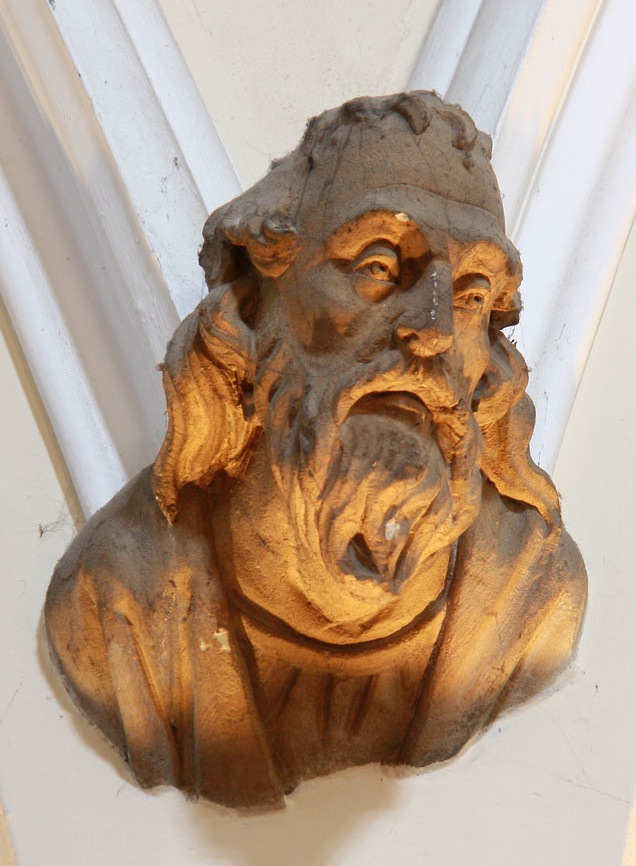
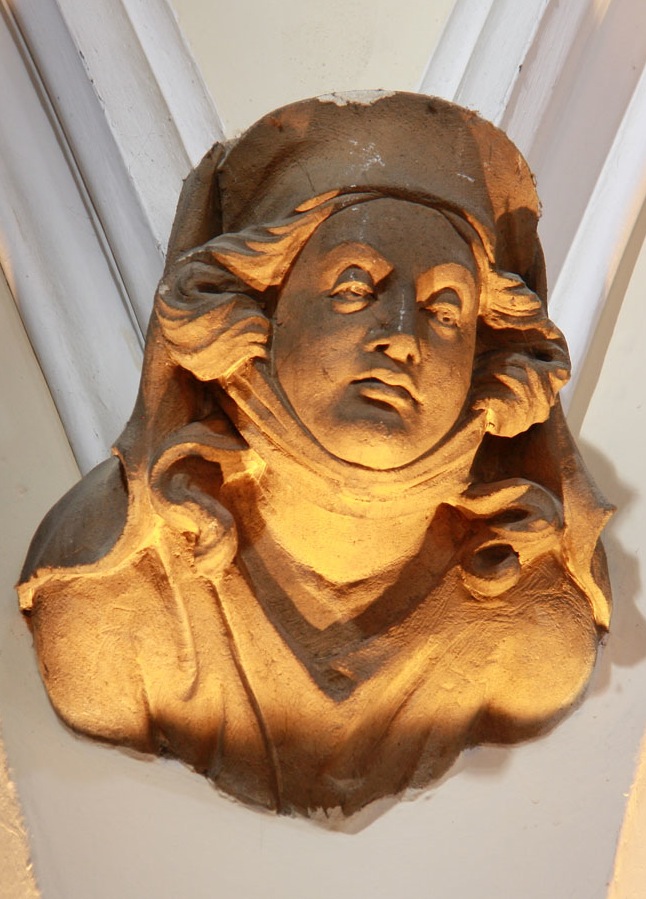
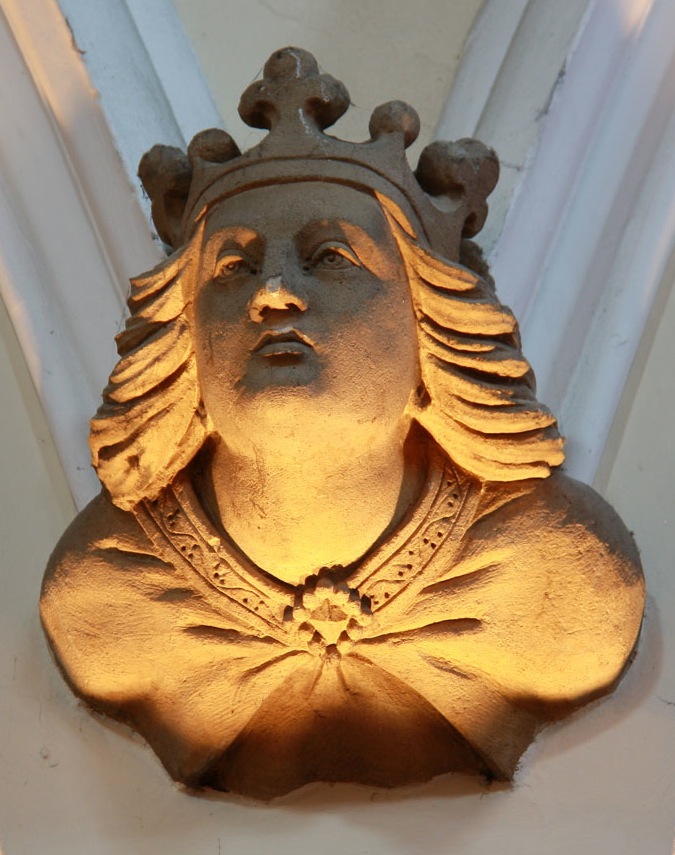
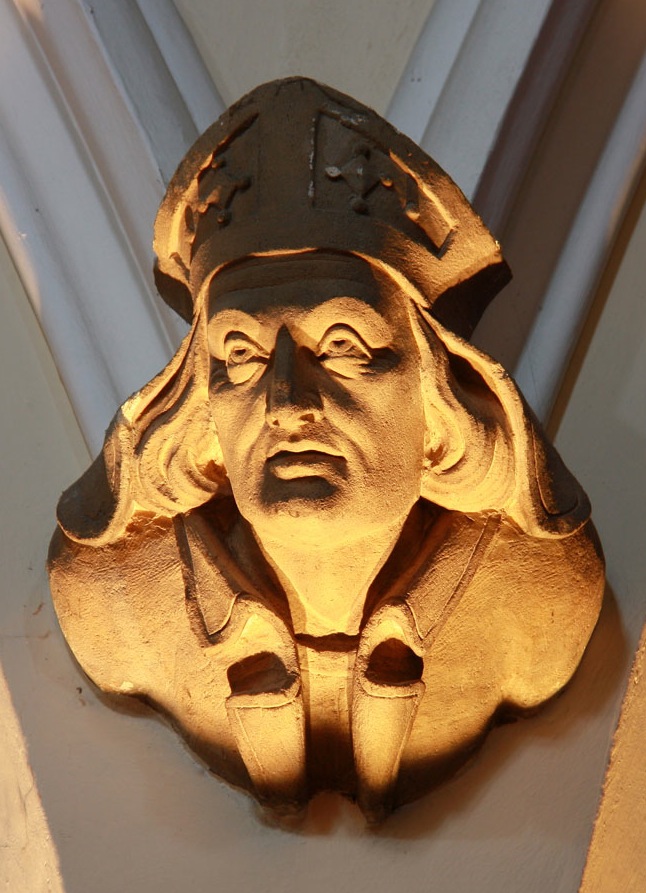
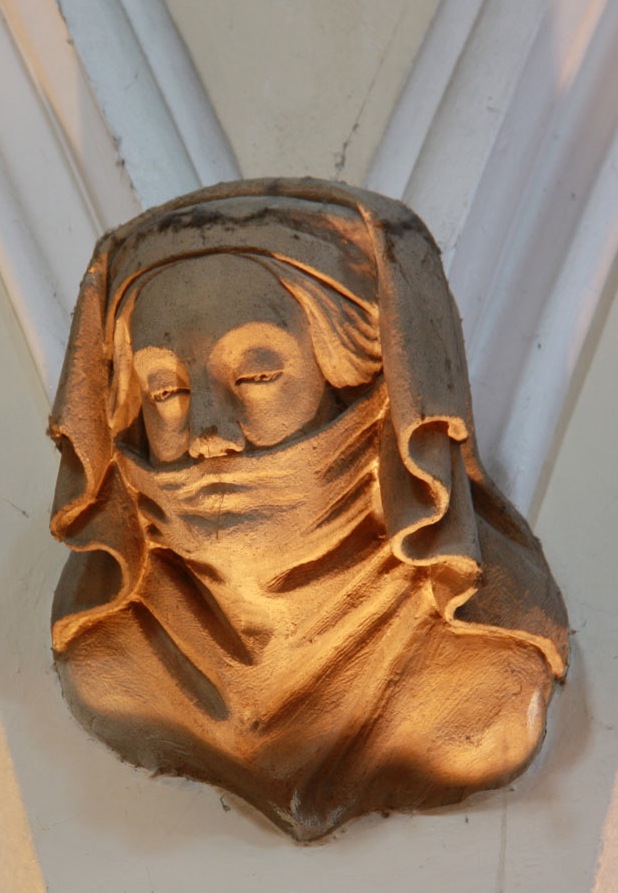
A distinctive, attractive and intriguing feature of Johnson's church is his use of these carved corbels depicting human heads rather than angels, along the nave. Again, they are highly individualised. They include an elderly man with a weary face, like the one on the far left; the fresh-faced young woman next to him; a plump-cheeked young queen wearing a crown; a bishop with his mitre; and a prioress or similar, on the far right. These indeed have "the air of the superb heritage found in our medieval churches" ("Present Church"), though, looking at the little figures on his Colquhuon Mortuary Chapel in Brookwood Cemetery, it is perfectly possible and indeed likely that they were to Johnson's own design.
Church Furniture
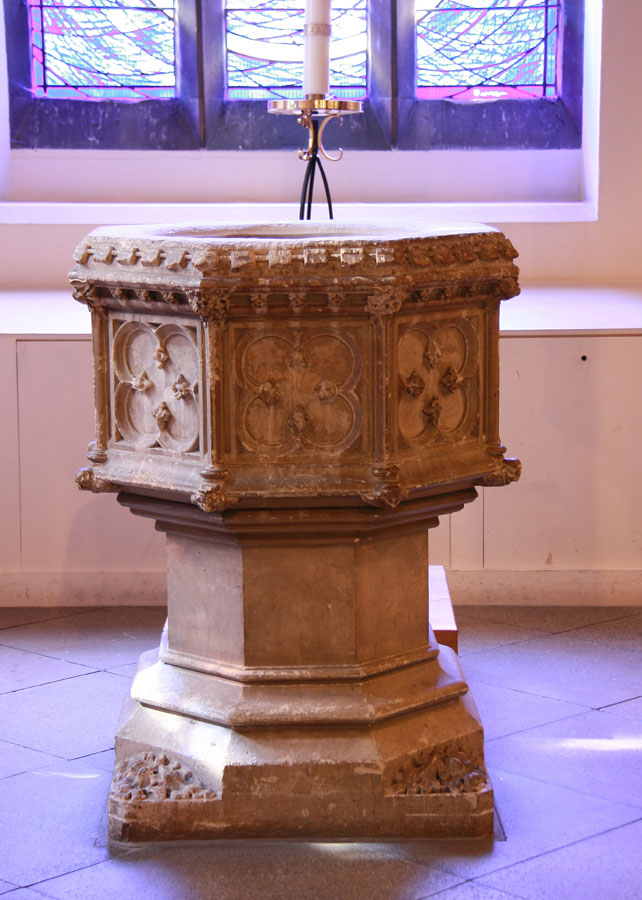
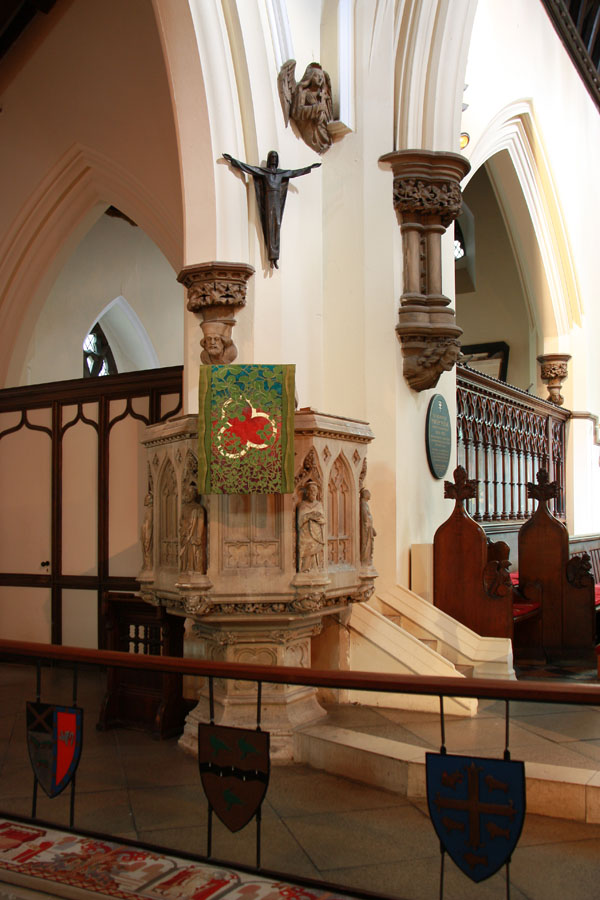
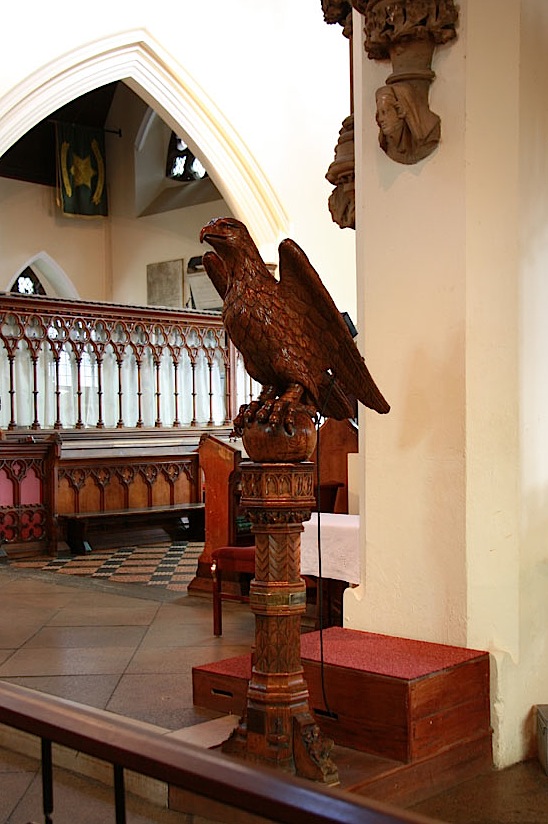
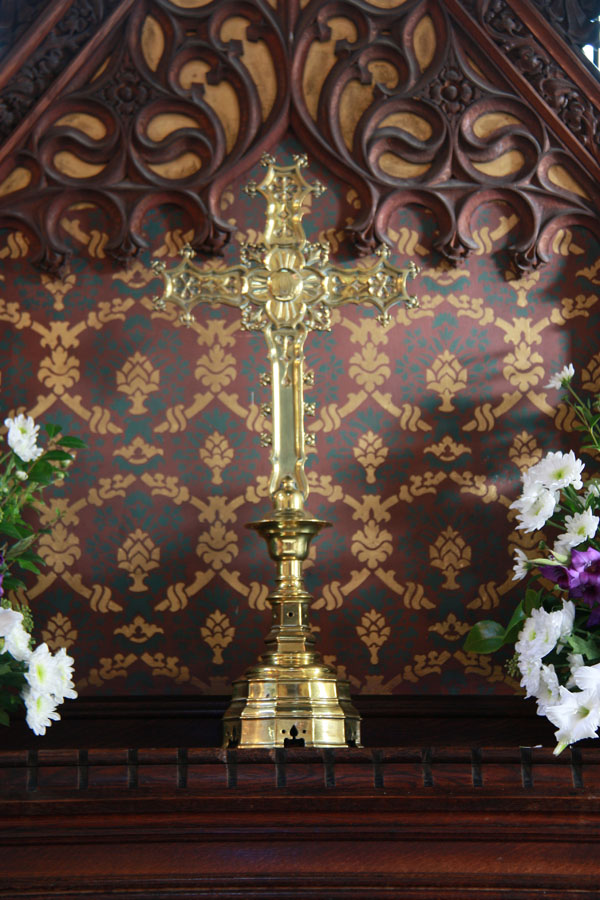
Left to right: (a) The font, bathed in light that has passed through a modern stained glass window. (b) The stone pulpit, with (probably) carvings of the apostles around it. Note the long corbels in situ supporting the arches above, and also the figure of Jesus, and an angel, above. (c) The beautifully carved wooden lectern. (d) The altar cross from the south chapel, with fine scrolled carving on the wooden reredos behind it.
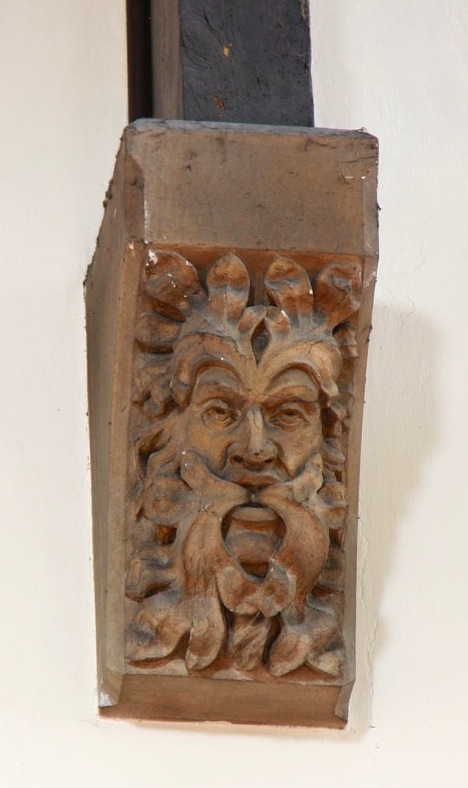
One of the less-refined looking — and older-looking — corbels. These might well have come from the old chapel. This one sports a "Green Man" head. However, Johnson himself has a "Green Man" at the end of the banister of the vicarage, at his little church in Cobo, Guernesy, where, again, every detail is to his own design, and carried out by local craftsmen.
Related Material
- St Edward the Confessor, Romford, I
- [Stained glass windows:]Christ's Ministry
- The Transfiguration
- The Resurrection
- The Nativity
- The Ascension
Reference
Powell, W. R., ed. "Romford: Religious History." In A History of the County of Essex, Volume 7. London, 1978. 82-91. British History Online. Web. 9 June 2015.
"Present Church." The Parish Church of St Edward the Confessor, Romford. Web. 9 June 2015.
Created 9 June 2015